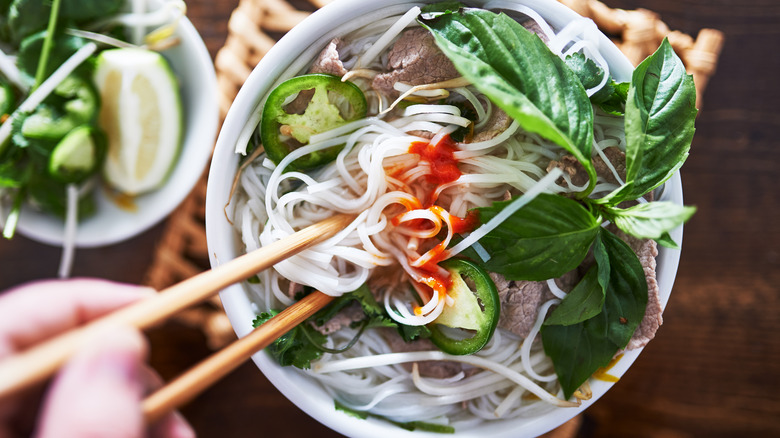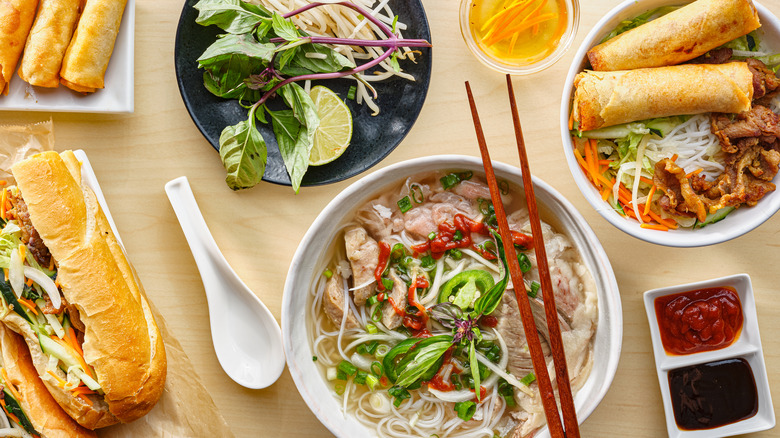Pho Should Have A Delicate Bite, But Beware Of Overly Thin Noodles
Ever wonder what the perfect noodles for pho (pronounced "fuh") are? This iconic Vietnamese noodle soup is celebrated for its delicious and aromatic broth and mix of ingredients. Using the correct type of noodle is essential; otherwise, the dish transforms into something entirely different. For instance, if you substitute pho noodles with vermicelli, the dish ceases to be pho but becomes a bun. Pho demands specific noodles to preserve its distinct identity.
While the ideal pho noodle should offer a gentle bite, it's crucial to steer clear of overly thin noodles and choose the appropriate noodles for maximal enjoyment. In the hot, steaming pho broth, thin noodles are prone to becoming mush or breaking apart, which can significantly detract from the texture and taste of this beautiful dish.
Pho noodles should also not be as thick as pad Thai noodles (and definitely never as thick as pappardelle). Ideally, pho noodles should resemble the thickness of linguine. Additionally, the shape of the noodle matters; pho noodles should be flat with rectangular cross-sections. These specific dimensions ensure the noodles maintain their integrity, absorbing the piping hot pho broth's flavors without becoming overly soft, mushy, or excessively chewy, which would otherwise dominate the soup and other ingredients.
Perfecting homemade pho with the right type of noodles: rice sticks
When on the hunt for the ideal pho noodles, venture into Asian supermarkets and look for rice sticks, especially the fresh ones located in refrigerated or frozen aisles. Look for labels such as "bánh phở" or "bánh phở tươi" — these are key indicators of their suitability for pho. These gluten-free noodles are crafted specifically for this beloved dish. For those who prefer dried noodles, it's equally important to find packages labeled with "bánh phở" as well.
Once you've found the right noodles or rice sticks for your pho, be sure to follow the package instructions when you're ready to prepare the noodles. Fresh rice sticks are already partially cooked, so they just need a few minutes of soaking in hot or boiling water to achieve the desired al dente or chewy texture. Overcooking them can lead to a mushy consistency with no bite. For dried noodles, fully rehydrate and cook them, also according to the package instructions. In both cases, you want tender noodles that are silky and slippery but also maintain a toothsome bite. Thus selecting and properly preparing the right noodles will significantly enhance your overall homemade pho experience.

